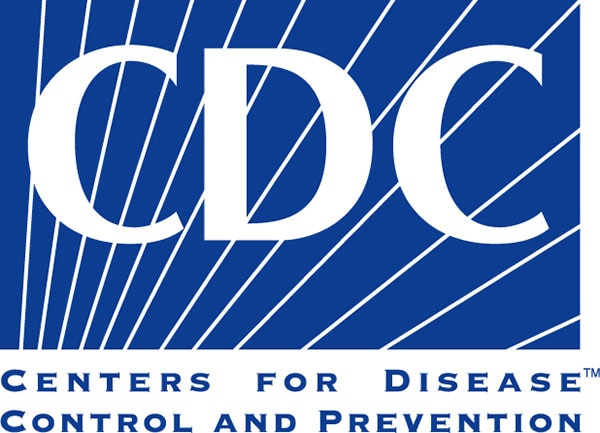The Centers for Disease Control and Prevention (CDC) estimates that up to 13 million people in the United States have latent tuberculosis (TB) infection. These patients do not feel sick, do not show symptoms of TB disease, and cannot spread the bacteria to others. They can, however, develop TB disease themselves. In fact, more than 80% of TB disease cases in the United States result from untreated latent TB infection. Treating latent TB infection is effective in preventing TB disease and is safer and less costly than treating TB disease.
CDC supports a dual approach that includes diagnosing and treating every case of TB disease and preventing future cases through expanded testing and treatment for people with latent TB infection. New latent TB infection treatment guidelines from the CDC and the National Tuberculosis Controllers Association (NTCA) preferentially recommend shorter 3- to 4-month treatments over longer 6- to 9-month treatments for most people living in the United States. Research shows that shorter treatments increase completion rates and reduce patient side effects.
Here are five things to know about treating latent TB infection.
1. Testing and treatment for latent TB infection should be a routine and integral part of healthcare for at-risk patients.
With the advances in testing and treatment, healthcare providers have a greater opportunity than ever to tackle TB. Healthcare providers should test people who are at greatest risk for latent TB infection or TB disease, including contacts of people with TB disease, people from countries where TB is common, people with health problems that put them at higher risk for TB disease and which make it hard to fight TB disease, and people who spend time in places where TB is common. The risk of latent TB infection becoming TB disease is higher for people with HIV, diabetes, or other conditions that weaken the immune system.
Public and private healthcare providers play a crucial role in testing and treating people for latent TB infection. Healthcare providers are encouraged to use TB blood tests and prescribe shorter treatments for latent TB infection to prevent the development of TB disease.
2. CDC and NTCA published new guidelines for treating latent TB infection in the United States.
In February 2020, CDC and the NTCA published new guidelines for the treatment of latent TB infection. This is the first comprehensive update to US latent TB infection treatment guidelines since 2000.
CDC has tools and resources for healthcare providers about the new latent TB infection treatment guidelines, including a latent TB infection treatment table and FAQs for clinicians and pharmacists. The online latent TB infection resources hub is a one-stop shop for resources related to education and training, guidelines, testing and diagnosis, infection control and prevention, and treatment.
3. Short-course regimens are preferred options for treating latent TB infection.
The new guidelines preferentially recommend short-course, rifamycin-based, 3- or 4-month latent TB infection treatment regimens over 6- or 9-month isoniazid monotherapy. Short-course regimens include:
Three months of once-weekly isoniazid plus rifapentine (3HP)
Four months of daily rifampin (4R)
Three months of daily isoniazid plus rifampin (3HR)
If a short-course treatment is not an option because of such concerns as drug-to-drug interactions with rifamycins, CDC and NTCA recommend 6 or 9 months of daily isoniazid as alternative, effective latent TB infection treatment regimens.
It is important for healthcare providers and pharmacists to know the difference between rifampin and rifapentine. Rifampin and rifapentine are not interchangeable. Clinicians must ensure that patients receive the correct medication for the prescribed treatment regimen.
4. Short-course latent TB infection treatment regimens can help remove current barriers to treatment for both patients and providers.
Short-course treatment regimens are effective, safe, and have higher completion rates than the longer 6-9 months of isoniazid monotherapy (6H/9H). Shorter, rifamycin-based treatment regimens generally have a lower risk for hepatotoxicity than 6H and 9H and help patients finish treatment.
5. Clinicians should determine the best latent TB infection regimen for each patient.
When treating patients for latent TB infection, clinicians should work with patients to choose the appropriate treatment regimen based on the following:
drug susceptibility results of the presumed source case, if known;
coexisting medical conditions, such as HIV; and
potential for drug-drug interactions.
When treating persons with HIV/AIDS for latent TB infection, clinicians should review the guidelines for the use of antiretroviral agents in adults and adolescents living with HIV.
Clinicians may choose to administer latent TB infection treatment through directly observed therapy or self-administered therapy on the basis of local practice, individual patient attributes and preferences, and other considerations, including risk for progression to severe forms of TB disease.
To learn more about treatment of latent TB infection, contact your state or local TB program or visit CDC's tuberculosis website.
Web Resources
For healthcare providers:
Frequently Asked Questions on Latent TB Infection Treatment for Clinicians
Frequently Asked Questions on Latent TB Infection Treatment for Pharmacists
For patients:
TB: General Information (Fact sheet)
TB Can Be Treated (Fact sheet)
Staying on track with TB medicine (Pamphlet)
12-Dose Regimen for Latent TB Infection – Patient Education Brochure
12-Dose Regimen for Latent TB Infection-Medication Tracker and Symptom Checklist
4 Months of Daily Rifampin for Latent TB Infection-Medication Tracker
Follow Medscape on Facebook, Twitter, Instagram, and YouTube
Public Information from the CDC and Medscape
Cite this: Latent TB Infection: New Guidelines and Preferred Treatments - Medscape - Apr 27, 2020.









